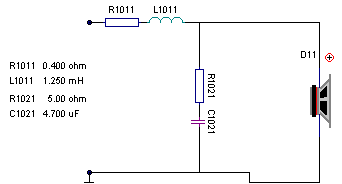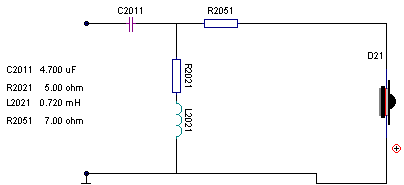|
The Norh 9.0 Marble speaker looks a little like an Easter ham, and is cast out of a solid block of marble. It uses the Scan Speak Revelator 8530 woofer and the 9900 revelator tweeter. A couple of months ago, a somewhat disgruntled owner delivered a pair of these very heavy speakers (along with one of the "mini" versions that substitutes the SS 9700 tweeter for the 9900 in a smaller ham), and asked for my opinion. I liked the midbass -- thanks to the inert cabinet -- but found the sound disjointed and lacking in midrange detail. We lugged them upstairs for some measurements, and this is what we found:

The tweeter clearly was connected with the wrong polarity. The other sample measured the same way, so this apparently is what the factory had in mind. I switched the tweeter polarity and remeasured. The null was gone, but the overall response was elevated above 3 kHz, and the speaker sounded edgy, smeared, and very fatiguing. I recently discovered a website that had very accurate measurements of another Norh offering -- the SM 6.9. Look familiar?
Since the drivers were of such high quality, and the cabinet so solid, I decided to design a new crossover from scratch. The sloped front baffle of the 9.0 permitted 2nd order acoustic slopes, and that's what I ended up with. I think the sound from the new crossover is excellent -- very cohesive and relaxed. Here's the new on-axis response. The woofer displays the usual Scan Speak peak below 1k and the dip centered at 1500 Hz, but I don't think a fix is worth the added crossover cost and complexity. The dip at 10 kHz is probably caused by a baffle ridge around the tweeter flange due to the tweeter flange being slightly recessed when tightened properly.

The "Mini" version of the 9.0 apparently uses the exact same crossover as the bigger brother. At least that's what I've been told, and the topology and capacitor values are identical. I haven't measured the inductors. If so, this is very strange, because the slope of the Mini front baffle is considerably smaller than the regular 9.0. This will alter the relative postition of the acoustic centers of the tweeter and woofer, and require a crossover modification. Plus, the 9700 tweeter's response and sensitivity differs slightly from the 9900. In this case, the Mini measured considerably better than the Maxi with the stock crossover:

Closer -- but still no banana. I redid the Mini's crossover, and ended up with very different component values than I had used for the Maxi's crossover. Here's the on-axis response:

Here are the schematics for the large 9.0. Notice that the tweeter is connected with reverse polarity. This is the opposite of the factory connection. Any resistor with a value of less than 1.0 Ohm does not really exist. That's just an approximate value for the resistance of the inductor itself. I used 16 Ga air core all around. Finally, if either speaker sounds too bright in your room with your equipment and program material, just increase the tweeter series resistor by 1 Ohm.


And here are the schematics for the Mini. The same warnings about tweeter polarity and resistor values apply.


| 
